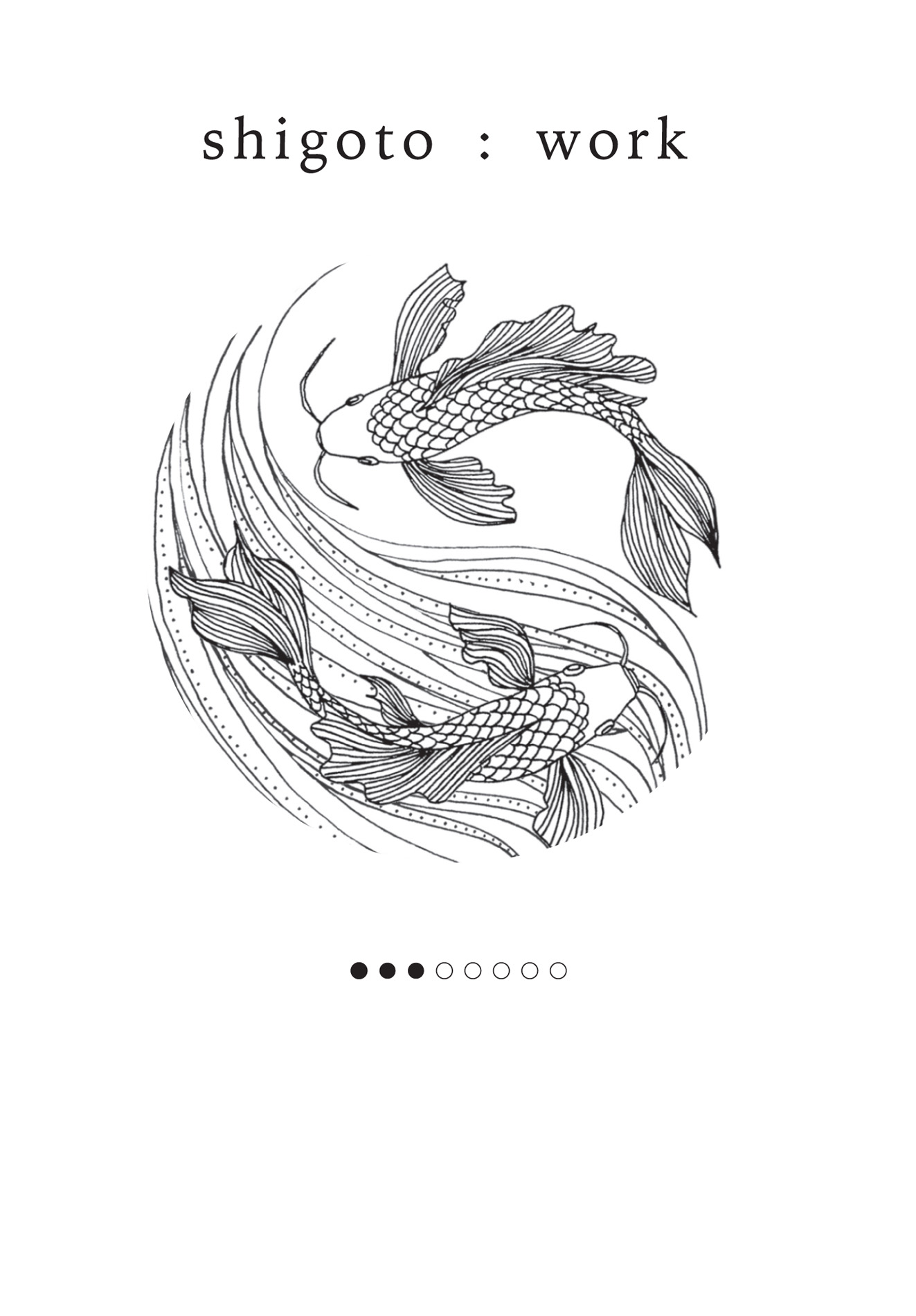


We spend a lot of our lives at work, especially if we live in places with a culture of overtime and where people are reluctant to take their annual-leave allocation, such as the US and Japan. The Japanese even have a word, karoshi, which means ‘death from overwork’. We are working longer hours than ever before, and technological developments now mean that we can be on the end of an email 24/7. To try to tackle this, France brought in a new law in 2017 giving employees the legal right to not check emails out of hours. But many other countries are lagging behind and burnout from overwork is a very serious problem around the world.
Achieving happiness and fulfilment at work is possible but not a guarantee. You can never fully control the people you have to interact with or what work problems might arise. What you can do, however, is create as pleasant an environment as possible and look after yourself both physically and emotionally to ensure that you are best placed to weather the inevitable storms that occur throughout the day. This is where Kaizen techniques can be transformative. Taking a step back to see what working habits don’t serve you and trying out some new things to shake up your tired old routine can make a huge difference to your happiness levels during the day and to your work–life balance. Taking stock of how you feel about your career and the way it is progressing can be very illuminating too, and can perhaps highlight areas in which you are unhappy or prompt you to think about a career change.

In this chapter I will look at some easy steps you can take to improve your current working environment, provide some tips on how to enhance your wellbeing at work, and also encourage you to think about the longer term and whether the career path you are on is the right one.
CREATE A PLEASANT WORKSPACE
For people who have to go into an office every day, it’s hard to have total control over the environment that you are working in. You can leave your calming home, do all you can to make your commute as stress-free as possible, and yet still end up in a windowless cave with a sad-looking filing cabinet for company. Many workplaces are waking up to the fact that their employees are happier and potentially more productive if they enjoy the space that they are surrounded by, but many aren’t or don’t want to invest any budget in making positive changes. Whatever your situation, there are a number of really small things you can do to make your workspace a nicer and more stimulating environment.
As with everything Kaizen, the first thing to do is to take a step back and take stock. Think about ways in which you can make your working environment more pleasant. Have a look at your desk space and think about:
The lighting. Are you getting enough daylight? Do you have nice lamps or is it just horrible strip lighting overhead?
Personalization. Does the space feel like your own?
Green things. Can you see plants and trees?
Posture. Does your chair support you properly? Can you reach your keyboard without having to lean forward? Is the top of your screen at eye-level height?
Clutter. Do you have papers scattered everywhere? Is there an old gym kit or lunchbox festering underneath your desk?
Storage. Do you have enough and is it the right type?
Once you have done an honest assessment, think of very small ways that you could improve the space. In an ideal world, your office would pay for all of these improvements and it is always worth asking if there is any budget. You should also definitely consult your HR department or office manager if you are experiencing aches and pains from the way that you sit, or if you don’t get any daylight. Over the page are some ideas for very small things you can try that will transform your day even if there isn’t a huge budget.

Get as much daylight or white light as possible. Several studies have shown that employees without any access to natural light will get less sleep at night, report poorer sleep quality, feel less inclined to do physical exercise, and generally report a worse quality of life than their counterparts who do have access to natural light.27 If you don’t have access to natural light, then talk to your office manager or line manager about whether any changes can be made. Can you operate a desk rotation system with those who do have light desks? Or can the office invest in white lamps for those who don’t?
Surround yourself with photos and uplifting things. Printing off a few pictures of friends, family or favourite artworks will infinitely liven up your workspace. Collect postcards when you go to art exhibitions and museums and print off pictures of holidays and fun times.
First Kaizen step: print off a picture or find a postcard that makes you feel happy and place it next to your desk.
Invest in some plants. A 2014 study by the University of Exeter of three workplaces in the UK and the Netherlands concluded that employees were 15 per cent more productive when they could see plants in their workspace.28 Their memory retention improved and they reported feeling generally happier at work. Succulents are cheap, happy to be indoors and are very hard to kill (even for me!), so unlock your inner millennial and see if having a plant on your desk makes a difference to how you feel at work.
Go fully Japanese and get a bonsai tree! There are many shops that now sell bonsai trees – check out your local flower or plant shop. Or if you are feeling craftier, make your own from a starter kit – there are lots online.
Surround yourself with nice smells. Japanese businesses have long espoused the benefits of having pleasant-smelling offices. A 1985 study by Professor Shizuo Torri at Toho University discovered that the use of essential oils in the office can have a stimulating and relaxing effect. The Shimizu Corporation, one of Japan’s largest construction companies, took on this study and started creating ‘intelligent’ offices, which disseminate different smells into areas of the office to improve efficiency and relieve stress. A reed diffuser or an aroma diffuser could be a good alternative. Fill it with your favourite essential oil and note how different you feel. If you sit near to others make sure that you discuss their scent preferences beforehand!
Sort out the clutter. It might seem too large a task to try to sort out absolutely everything in your office or desk space at once. So break it down into very small steps. Once a week, allocate a drawer that you wish to tidy for five minutes. If there is an old file that you haven’t been through in years, take five minutes out of your afternoon to look through it and chuck everything you don’t need away. The thought of having to do everything at once can feel like a huge mountain to climb so concentrate on one very small thing you can do.

Get your colleagues involved. This means you can all spur each other on.
First Kaizen step: try setting a timer for five minutes once a week and all tidying as fast as you can for that short period. Reward yourselves afterwards with a sweet treat.
Make your storage look pretty. Endless cardboard boxes of files or old rusty wire trays can look hugely uninspiring, so think if there are any ways you can jazz up your storage. Lots of shops now sell very cheap wire baskets in fun colours or can you cover your existing boxes in wallpaper samples or cool posters that you like? Get creative and see how much it can transform your space.
Most people spend at least eight hours a day sitting at work and so it’s important to try to make it as joyful as possible. If your office doesn’t have the budget to make any improvements, can you organize a bake sale or some other event to raise funds to change the space?

DE-STRESSING YOUR COMMUTE
If you do have to commute to and from work, the section on exercise has already introduced the idea of using your morning commute to move about more, but have a think about whether there are any other ways that you can make your commute less stressful. Over the course of a week, try writing down at the end of each journey what the small sources of stress were, and then for each stress, think of a way in which it could be eliminated. This might not be possible for absolutely everything – there is no way to always account for somebody shoving their smelly armpit in your face on the metro or somebody eating fried chicken next to you at 8am – but do think of small ways you could improve your travels. Here are some ideas for short-term steps:
Alter your journey to a quieter route. Although this may take slightly longer, does it have an impact on your stress levels? Does getting a train that takes ten minutes longer but where you get a seat prove a more pleasant experience than being crammed on the faster train? Try this once and see if you notice a benefit.
Make a case for changing your work hours. Could you alter your work hours slightly so that you get to work earlier and leave earlier, or arrive later and leave later? More and more work places are waking up to the idea of flexible working hours. It may be that it helps a lot with childcare or helps with the fact that you are more productive in the morning or not a morning person at all. You may find that altering your working hours even by half an hour makes a big difference to the stress of your morning or evening routine.

Block it out! If the various sounds of people around you are an irritant, then does travelling with some noise-cancelling headphones make a difference? Can you investigate new podcasts or soothing playlists that will change your experience?
Put down your phone. Could you use the time more effectively? Does reading a book make you feel any different when you arrive at work? Or can you spend the time learning a new language?
First Kaizen step: spend one commute with your phone turned off in your bag and read a novel instead.
If you’re busy at work and in the flow of doing something, it is easy to just continue to plough on through, eat a Sad Sandwich at your desk, and not take any time out for yourself. Statistics show that only one in three workers takes a proper lunch-break, and this is proven to be bad for both your physical and mental health. Getting outside increases your vitamin D and serotonin levels, while eating mindfully rather than distractedly will mean that you take more time with your food and will appreciate it more. Here are some easy ways in which you can transform your lunch-break:
Exercise! More workplaces are now offering group exercise sessions or yoga/Pilates classes. If they don’t already, can you see if there are other colleagues interested in a lunchtime exercise club? Not only is it bonding but having others to motivate you to step away from your desk will ensure that you keep up the habit.
Have a walk outside. Going for a walk can sound like such rudimentary advice, but escaping your desk and getting outside can make such a difference. Is there a local park nearby or a canal or river that you can walk along? If you work in a town or city centre, are there roads or areas nearby which you are yet to explore?
First Kaizen step: for one lunchtime per week, try getting outside for an hour.
Be a culture vulture. Are there any galleries or museums near to your work which you are yet to visit? Going during the week will often mean that it is much quieter, and you can explore in peace while also getting your cultural fix.
Read. Try spending one lunchtime a week reading a book and see if it makes any difference to how you feel when you return to your desk. Did it transport you to another world free from annoying emails? See if there is a local library that you can join – not only so you can you borrow books for free, but they often have relaxing reading spaces where you can really switch off.
Be prepared. How often do you finish your lunch and feel satisfied? Do you spend too much money at overpriced sandwich chains? If the thought of having to prepare your lunch every night or morning before work is too daunting, try introducing it into your routine once or twice a week. There are many recipes online for satisfying lunch ideas, or bring in leftovers from the night before. Investing in a stylish bento-style lunchbox makes the contents seem more desirable than an old takeaway container.

Give your nan* a call! Is there a friend or a family member who you haven’t called for a while? Spending your lunch-break connecting with a loved one will be infinitely more satisfying than just scrolling through the internet for an hour and will let them know that you care too. *Insert applicable friend or family member here.
First Kaizen Step: try a five-minute lunchtime meditation.
Go and get a bit zen. The office might seem like the last place that you should meditate, but can you find a quiet meeting room or breakout space? Or is there a bench or patch of grass outside that you can use? Taking some time out to relax your body and just concentrate on your breath can have transformative effects on how you feel for the rest of the day.

FIVE-MINUTE LUNCH-BREAK MEDITATION
Whether you work from home or are stuck in a stuffy office all day, taking five minutes out to concentrate on your breath and think about how you are feeling that day can have huge benefits, whether everything is going swimmingly or if you’re having a total shitshow of a day.
I started taking up meditation after a bad break-up and found it really helped me to process my emotions – not by blocking them out but by acknowledging when I felt bad and accepting those feelings. It resulted in me being kinder to myself and – I think – handling the break-up better than I would have done otherwise. During a stressful patch at work, I also found it very useful to take a little bit of time out at lunchtime to meditate when it all got a bit much. I would return to my desk feeling much calmer and far more inspired to work hard in the afternoon.
There are plenty of guided meditation apps that you can download to your phone, or videos that you can stream on YouTube; these are particularly useful if you want to get into doing longer meditation sessions. If you are new to meditation though, and not sure if you’ll like it, here is a really quick five-minute exercise to try. It is super-easy and can be done literally anywhere you like.
You may find that your mind tends to wander more on certain days, especially if you are particularly stressed. Don’t panic if this happens, it is all part of the process. If you find this exercise useful then try introducing it into your lunchtime routine once or twice a week. If you find this beneficial then you can step it up by meditating more frequently or by adding on a few minutes to the time that you spend meditating.

We have already talked about transforming your morning routine, your commute and your working environment, but all this effort is redundant if you then get to work and immediately feel stressed or out of control. There will almost always be minor irritations – certain colleagues who cook fish in the microwave or man-spread in meetings – but there are also practices that you, yourself, can change in order to manage your time better and achieve an improved work–life balance.
In order to establish some of the things you might want to change, it is a very good idea to take a step back and really interrogate the ways in which you are working. Could you be happier at work? What are your current grievances? Are there any ‘quick wins’ for ways that you can improve things?
Have a think about the following:
⊚ Do you have a good work–life balance?
⊙ Do you regularly work over your contractual hours? If so, is it because you are expected to? Is there a culture of presenteeism?
⊙ What are your relationships like with your co-workers? Do you like your boss? If you manage people, do you think that you do a good job of it?
⊙ Do you like the company ethos in general?
⊙ Do you feel challenged and motivated in your work?
⊙ Do you take regular breaks?
⊙ How do you feel at the end of the working day? Tired, thirsty, hungry, frustrated, unfulfilled, like you have done your best?
Keeping a work journal that’s purely dedicated to how you feel at work over the course of a week can be really illuminating. At the end of each day make a note of how you have felt at work that day and any problems that have arisen. Is there a particular person who is causing you grief? Did you manage to take breaks? etc. Once you have interrogated how you are feeling at work, think of some small actions you can take to improve your working life.
EMAIL ETIQUETTE
For most of us, emails make up a major part of our working life. They are a constant source of stress, seemingly screaming for our attention. I have always worked in very email-intensive jobs and at times have found it impossible to keep on top of them. They can’t be eliminated completely, but you may find that being mindful of their effect on you and changing your attitude towards them can make a big difference.
Behavioural psychologists acknowledge that email is incredibly habit-forming because it mimics what is referred to as a variable-interval reinforcement schedule. In layman’s terms, this means that each email demands our attention because we keep chasing the next interesting one. Perhaps one in twenty emails we receive will be something of note, but we will keep checking regularly in order to seek out the gratification of that one important email, even when the rest is made up of spam or people complaining that the men’s toilet is blocked. In the same way that gambling addicts keep playing the slots in Vegas waiting for their windfall, we keep waiting for the next interesting email. It might not sound as harmful, but the unconscious compulsion to check emails – especially when you’re not at work – can form a bad habit that can have huge effects upon your social and home life. Even at work, it means that you are constantly flitting between tasks and not getting in ‘the zone’. Here are some small ideas for transforming your email etiquette:
Don’t check email on the way into work. A study released in 2018 revealed that half of all office workers were checking their emails on the way into work.29 You aren’t getting paid for this time so make sure that it is all your own.
First Kaizen step: choose one morning a week where you don’t check on emails or think about work at all until you reach the office.
Turn off email notifications! Do you find that you are often working on one task and then suddenly an email pops up and immediately demands your attention? This happened to me a lot but then I (accidentally) turned off my email notifications and suddenly found that I could concentrate far more easily on one thing at a time. It was like Einstein’s apple-tree moment, but only slightly less revolutionary!
Designate times of day to check email. This will depend on the nature of your work, but if you have a job that requires a mixture of tasks then think about whether you can be off email for periods of time each day in order to get the other tasks done. Rather than constantly trying to multi-task between answering emails and other tasks, you will find that you are far more productive if you concentrate on doing one thing well for a prolonged period. Close down your email and focus on a creative task that needs your full attention for a set period of time. Then return to your emails when you are done. I find that I have hardly ever missed anything by being away from my emails for half an hour or forty-five minutes. If people need you urgently, then they will ring or come to find you.
Keep only urgent things in your inbox. If you receive lots of emails every day and find that you have a humongous inbox that keeps you awake at night, try starting to keep only emails that you need to action in your actual inbox. Everything else can be filed into folders and searched for later. It can be hard to start doing this if you already have a huge inbox to clear, so try moving all of your inbox into a folder and then moving out the urgent tasks. You can then clear the messages in the folder when you have more time.
If you receive an anger-inducing email, leave it for half an hour. Replying straight away when you are full of rage will do nothing to calm down the situation (or you!). Take some time away from your screen or go to seek advice from a helpful colleague rather than feel like you have to respond instantly.
First Kaizen step: try this tip with your next annoying email and see if it has any impact upon how you feel.
Would a phone call be better? I often find that so many of my tedious email chains spent endlessly pondering over various situations could have been resolved much more quickly if one of us had just picked up the phone. This won’t be the answer every time, but it can save a lot of back-and-forth. You may also find that somebody who has a standoffish email manner may actually be lovely in real life and much more amenable over the phone than via email.
Go to talk to colleagues! Similarly, I used to find that colleagues who sat across the desk from me would email me questions when it would have been far quicker to just ask me out loud.
First Kaizen step: next time you have a question, be brave and go and find the person instead of emailing them.
For most of us, email will have been part of our job for most of our working life, and old habits are very hard to break so don’t try to introduce all of these techniques at once. The most important thing is to be mindful of your attitude towards email, notice when you are slipping into bad behaviour, and trying your best to switch off when you can (and/or get friends and loved ones to remind you of this).
LOOKING AFTER YOURSELF
We have already looked at ways to develop a healthy and productive commute and lunch-break, but also think about ways that you can look after yourself during the working day.
Be mindful of what you eat and drink at work. I am somebody who used to always get to the end of the day and be thirsty because I had drunk seven cups of coffee and not a single glass of water. Don’t be like me! Try replacing your caffeine with water and having healthy snacks to hand for when you get sugar cravings.
First Kaizen step: try to tie filling up your water bottle or glass to a regular activity you do, such as going to the toilet or speaking to your boss.
Have breaks. Make sure that you leave your screen for at least five minutes every hour.
Go outside! Even if the sun isn’t out and it is miserable outside, you can still get a hit of vitamin D and boost your serotonin levels. It will make you feel infinitely better.
Improve bad working relationships. We are all human and if you are working in an office with lots of different personalities – most of whom you probably didn’t choose to work with in the first place – then it is inevitable that there may be certain people who you don’t get on with. It can be easy to get completely bogged down by annoyances with certain people or feel impotent if you have a toxic relationship with a colleague. Take a step back and think about whether there is anything you can change about your current environment to improve things. Can you discuss your issues with somebody from another department who might be more objective? Or could you reorganize the structure of a meeting so that it is harder for a certain person to dominate? Finding someone to confide in may help you solve the problem.

Surround yourself with positive influences. You might not be able to avoid colleagues who you don’t like altogether but you can do something about proactively surrounding yourself with positive and supportive people. If there is a more senior colleague who you admire, then I’m sure they won’t mind if you take them out for a coffee to pick their brains or ask for advice. Similarly, if there is somebody in a different department who you sense that you might get on with, then invite them for lunch. Having supportive people you can turn to when work is tough or you have a sticky situation with your boss can be so helpful.

If you are a freelancer or work from home, it can be easy to work propped up in bed with your laptop burning into your lap until you realize that the only human contact you have had all day was with the postman and that you haven’t worn anything but loungewear since the weekend. (Can you tell that I talk from experience?)
If you are fortunate enough to have space for a home office, then use some of the tips in the previous section to create your own calming work environment. Often home offices become multi-functional rooms that double as a dumping ground for clothes and/or arm weights for when you definitely start that routine to get ‘Michelle Obama arms’, so see if you can change the space so that it is exclusively your own inspirational place to work.
For those people who don’t have an office space, then do try to at least move out of your bedroom to work. Separating out where you work from where you relax is crucial for achieving good sleep and indicating to your brain that you are now in ‘work mode’ when you set up in the morning.
Know when you work best. Some people are able to sit at a table from 9am until 8pm and work consistently for that amount of time until they are done. I am not one of these people. One of the benefits of being in control of your working time is that you can tailor it to how you work best. Are you an early riser and more able to concentrate in the morning? Then get up at 6am and work until lunchtime. If you hate mornings then don’t force yourself to get up early, but structure your day around a later finish and don’t feel guilty about it.

Have a strict routine. While you should be flexible with your schedule according to how you work best, it is still imperative that you stick to as much of a routine as possible. If you find that you are more creative in the mornings, then allocate your creative time for then and save the boring admin tasks for the afternoon, or vice versa. And try to always finish at a certain time each day so that you clearly denote which hours are your work time and which are your leisure time. It can be so easy to let your work bleed into your personal life, so be sure to allocate set working hours, stick to them, and let others know of them so that they don’t try to encroach into days or hours when you’re not working.
Get out of bed. Not everybody will have the luxury of a home office but physically getting up and moving into another room will indicate to your brain that it is now time to work. It will also help your sleep environment by banishing any reminders of work from the bedroom.
Change your scenery. I found that whenever I was in a creative rut, just going and working in a new place – whether that was the foyer of a museum, on a bench in the park or a cool coffee shop – really helped. It doesn’t have to be every day, but switching up your surroundings can have a huge effect on your creativity and productivity.
First Kaizen step: designate one day a week to working in a different place to where you usually work.
Remove reasons for procrastination. There are now lots of free programmes you can download that will restrict social media and/or access to the internet altogether for a set amount of time. I am the sort of person who can accidentally fall down a social media ‘hole’ for hours without realizing it, so I find that proactively restricting my access to the internet really helps my concentration.
Schedule in procrastination time. If you like to scroll through the news or Instagram for an hour first thing, then accept that this is the case and schedule it into your plan for the day. It will remove the associations of guilt and mean that you then have time to concentrate afterwards.
Accept that you will have off days. If you have a day where you feel creatively blocked or too tired and overwhelmed by what you have to do, this doesn’t matter so much in an office where you are getting paid a regular salary. But if you are working for yourself and having to organize your own time then it can make you feel SO guilty. Be gentle on yourself. If you are able to close your laptop and give it a rest, then do so and start again the next day.
Cultivate a support network. Working by yourself can be a lonely business so it is imperative that you build up a community of other freelance pals. This can either be in a co-working space, if you have one, online or formulated from people you meet networking. If you have a number of friends who work freelance, then forming a WhatsApp group in which you can bounce ideas off each other or moan about companies failing to pay you on time can be such a source of comfort and sanity.
KAIZEN AND CAREER CHANGE
Making a change when you have been slogging away on the same career path for ages can be a scary and daunting prospect. It can seem like too much of a leap into the unknown when you are in a stable job with a regular income, even if your job doesn’t feel right for you. Most people also don’t have the luxury of being able to take a drop in wages in order to start again at the bottom of another career ladder. So this is where an incremental approach to change can be highly beneficial. Having a long-term goal of changing career and working towards it gradually can mean that you can test out whether you like your new chosen career first, perhaps without having to take much of a financial hit in order to do so, and consequently it won’t feel quite as scary.
You might not have a clear idea of what your dream career is, but it could be that you have a vague sense that you are unhappy in your current role but are not sure what you really want to change. In this instance, it is best to take a step back and take stock. Write down a list of positives and negatives about your current role.


Which parts of the job do you like doing and which parts do you hate? For example: meeting people, being proactive, negotiating, putting together a really neat spreadsheet, working in a team, working alone, producing events, talking on the phone, travelling, networking, designing things, etc.
Have a think about your strengths and weaknesses For example: caring, being good with new people, decision maker, can make PowerPoints look pretty, struggle with confrontation, not a team player, attention to detail. . .
What about your current work environment? Do you like working in an office? Or do you want to work outside more? Is it too busy or too quiet? Do you come into contact with enough people or too many people? Do you get to use your brain enough? Is it stressful?
Once you have a list of likes and dislikes, and strengths and weaknesses, have a think about which careers might suit you. Again, friends and family can be very useful in helping with this or else lots of regions operate careers advisory services. Start to collate a list of the positives that you have to offer and any transferable skills that would be useful for your new career path.

It then isn’t about making giant leaps to change careers but doing small little things to take you in the right direction. These things might not seem huge on paper but knowing that you are working towards a meaningful goal will motivate you to keep going. Some ideas for small steps you can take to start to explore a career change include:
Talk to your current work. Is there any useful experience you can gain from where you are now? Could it be that you are dissatisfied with your current role and believe that there is a more suitable role within your organization? Or are there at certain skills you need for your dream career that you could learn in your current workplace (the bonus being that you wouldn’t have to pay for an expensive training course!)?
Have a conversation with someone who does the role. Before throwing in the towel with your current job, scope out your dream role and really contemplate whether you have what it takes and if it will make you happy. Spending seven years training to be an architect before realizing that the job is just as unfulfilling as your last one will be time badly spent. Ask your friends to see if they know anybody doing the role you are interested in, or approach people who do the role on social media. Most people are happy to give up their time for a coffee or a chat over the phone or email. Otherwise you could seek out podcasts or online interviews to find out more.
First Kaizen Step: research your dream job for an hour.
Try out your new career for a day. Shadow somebody for a day to learn what the nuts and bolts of the job are and see whether you would enjoy it. It might use up one of your holiday days from work, but it is worth it in the long run if it means that you can learn something valuable. If you are looking to move into the charity sector or something to do with the arts, are there any organisations that you can volunteer with to get some invaluable experience?
Look into training. If there are certain skills that your new career requires then research the training options. It could be that this is something you can do in the evening or at weekends, which would mean that you can start working towards your new career while still being paid the salary from your existing job. Don’t forget the growing number of online courses that you can do remotely as well.

Get networking. See if there are any industry events that you can gatecrash and keep abreast of newsletters and publications. Say ‘yes’ to invites and try to meet as many people in the industry as possible. You never know where a chance meeting might lead.
Get your finances in order. If you will have to take a pay cut to change careers, then do an honest analysis of whether you can afford it. Could you ask a friend or family member to help and make a plan to pay them back? Or can you cultivate any ‘side hustles’ to keep your finances ticking over in the interim? Side hustles are ways of bringing in supplementary income and can be anything from selling some items on eBay, putting your crafts up on Etsy or similar sites, tutoring a student for their exams, dog walking, babysitting or teaching an exercise class. My friend started running a regular Zumba class in her neighbourhood and made enough money to quit her job and relocate to work in a different country.
MEDIUM- AND LONG-TERM GOALS
Changing career can use up a lot of time and energy, so make sure that you are mindful of the timeline and don’t try to achieve too much at once. Break down the changes you have to make or the skills you have to learn into really small steps, working towards a medium-term goal, so that you aren’t overwhelmed by the workload or alteration to your routine.
If you are already working, then voluntary organizations or training courses will usually aim to be as flexible as possible, and don’t be afraid of asking for more time or some time off if you need it. If you are finding it tough to juggle an existing job with your efforts to change career then take it as easy on yourself as possible, slow down if you can, and try to keep the reasons why you wanted a change at the forefront of your mind to keep you motivated. Make some short-term and medium-term goals to get you to the long-term goal of getting your dream job. Invite others to support you and remind you of these reasons too!
KAIZEN AND STUDYING
Whether you are completing exams at school, off to university for the first time, taking a break from your career to study or trying to balance part-time study with work, studying can be extremely stressful. The ‘lazy student’ stereotype doesn’t account for the late nights, the sheer brain power and energy you need, the disruption to your routine and the stress that exams can induce. And in an era when walking out of your studies straight into your dream job is far from guaranteed, the pressure to achieve the best results is even more intense. Recent reports have cited a sharp increase in first-year university students reporting mental health problems, and there has been a trebling of UK students dropping out of university with mental health conditions in the past ten years.30
Moving to an entirely new city for the first time or trying to fit lectures and library time around an already-busy job means that other parts of life might be neglected – sleep, diet and exercise routine (ironically, the very things that would probably help to reduce stress levels!). If this is sounding even vaguely familiar, then introducing a few of these habits could be hugely beneficial:
Discover how you work best. Different studying techniques will work for different people. You may have a friend who likes to write out the entirety of the textbook in green pen and try to memorize it, while you remember things best if the information is in a pretty picture. Find out what works for you and don’t try to mimic other people. It may be that you like to work in complete silence or that you remember information better when you are listening to hardcore metal music. Building your study routine around the way that you work best will maximize your time and energy.

Manage your time around how you work most effectively. If you can sit in a library for twelve hours straight without completely losing your mind, then good for you! For the rest of us, working in smaller bursts and taking regular breaks will be far more effective. Think about whether you work better first thing in the morning or whether you are more productive in the afternoon, and fit your routine around that. If you are a morning person, get up early to study but then give yourself the afternoon off. If you are trying to fit studying around paid work, make sure that you allot enough time to your studies and that you aren’t trying to cram in too much when you are tired.
Take breaks! It can be easy to just plough on. But taking five minutes out of each hour to get some fresh air or drink water does wonders for motivation and concentration.
Do a little bit every day. This has been a hard lesson for me to learn, but taking a small amount out of each day to study is far better and less stressful than trying to cram it all in at the very last minute. Think of inventive ways that you can manage to do a little bit of studying each day, perhaps even on the bus in the morning.
Prioritize. Be honest about your weaknesses and focus on those first, not on the easy stuff. For example, if you are learning a language and hate revising verb endings, then get this out of the way before practising something that comes easier to you, like conversation.
Keep track of every reference. Make a note of every page number or journal reference as you go along, as it is a total pain in the arse to have to go back through and find everything again. It might seem tedious at the time, but you will thank yourself at the end when you have mountains of footnotes to write.
Study in a stimulating space. Rather than having one really boring wall that you stare at, try mixing up your study environment every so often. Having a different background will stimulate your brain. If you find it useful working with others, set up a study group with people on your course to break up the tedium of having to revise by yourself.

Keep your goal in mind. When you are in the midst of revision or essay-writing hell, it can be easy to forget why you are doing it in the first place. Writing reminders on sticky notes in your study space or changing your computer background to a picture of your goal will remind you why you are doing it. If you want to become a doctor, then hang a stethoscope in your eyeline to keep reminding yourself of what lies ahead.
Keep track of your progress. It can be hard to see any sort of light at the end of the tunnel when you are in the middle of essay writing and revision. Try keeping a log of everything that you do each day – whether it is your word count for an essay or the various books that you have read – so that you can look back and appreciate how hard you have worked.
Plan your day. Rather than looking at the day as an open-ended amount of time in which you have to cram in as much as possible, set yourself small achievable goals at the beginning of each day. It might not be that you achieve them all every single day, but having some focus to your time is a far better tactic than trying to just blast all of the work in a kamikaze fashion.
Reward yourself when it is over. If you can afford it, plan a short weekend break or treat yourself to something that you’ve wanted for ages. Knowing that there is a Turkish massage or a killer pair of boots waiting at the end of it all will help to keep you motivated.

LOOK AFTER YOURSELF
It can be easy to neglect your mental and physical health when you are studying. Rather than taking an hour out of your evening to cook something healthy, you might often feel like grabbing something on the go and using the extra time for your work. But busy and stressful periods are actually the time when your body needs you to look after it the most. It is imperative to stay healthy – and it will help to improve your concentration and energy levels too. Double win! Here are a few very small ways that you can continue to keep up good habits while you are studying:
Don’t overdo the caffeine! It can be easy to rely heavily on coffee when you are studying, but too much caffeine will dehydrate you and cause energy crashes. Invest in a reusable bottle and set an alarm on your phone to refill it with water every two hours or so. The break from the books or screen will do your brain good too.
Keep to a sleep routine. It can be tempting to ‘pull an all-nighter’ when you have loads of work to do, but can you realistically do your best work at 3am? Try to keep to as regular a sleep routine as possible and get at least seven to eight hours per night.
Stay clear of the junk. A friend at university (who shall remain nameless) often used to eat kebab meat shaved onto pizza, with extra cheese on top. Don’t do this. Your body will appreciate it a lot more if you consume foods that contain some basic nutrients during stressful periods. Batch-cooking something healthy at the weekend that you can then eat during the week will save you money in the long run and you will feel so much better for it.
First Kaizen step: get all of your course mates together and plan a super-healthy meal to eat.
Move your body. Spending time on exercise might seem like the last thing you should do, but stretching your limbs and moving about does wonders for stress and energy levels. If you don’t have time to go to an exercise class, try a short yoga video when you first wake up.
Practise mindfulness and breathing exercises. Devoting even ten minutes a day to concentrating on your breath and releasing the tension in your body will have a huge de-stressing effect.
First Kaizen step: practise the Five-minute lunch-break meditation exercise on page 133.

